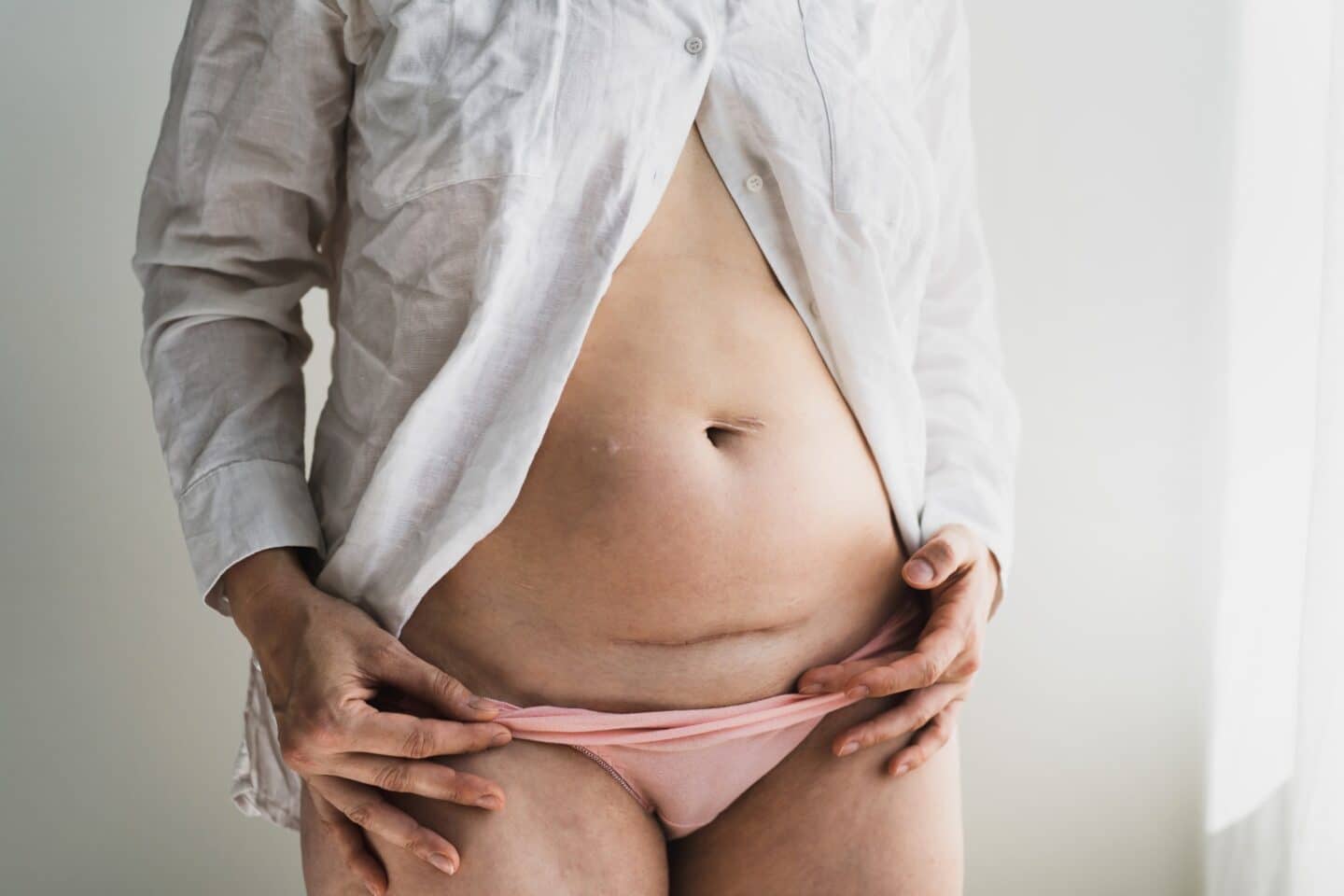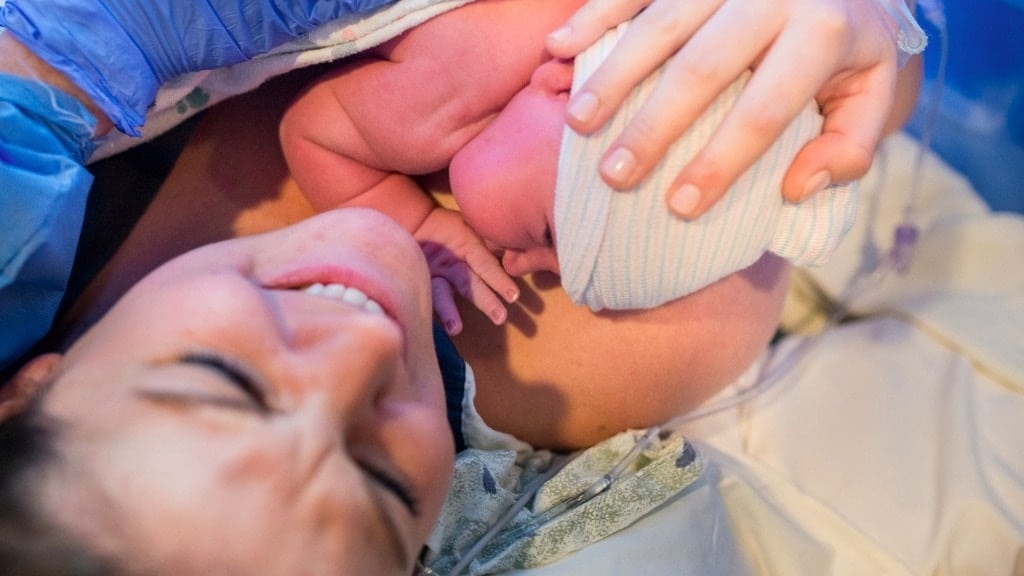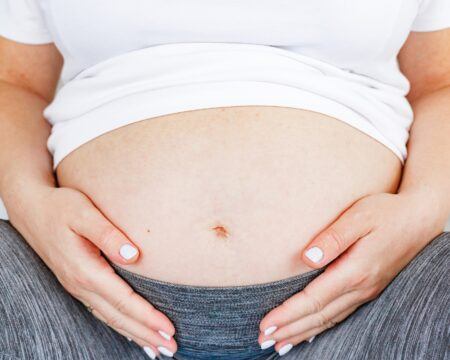8 natural C-section recovery tips to help you feel better fast
These tips can help you heal faster, naturally.

@natashayummyphoto / Twenty20
If you’ve given birth to your baby via a C-section, then C-section recovery is probably at the forefront of your mind. You’re back in your own home, your own bed, and your own PJs. Gone is that backless number you donned in the hospital. The hospital staff sent you on your way with post-op C-section instructions, but you’re still very much in need of tips to handle your at-home recovery.
Luckily, there are several home remedies for C-section recovery that can help speed up the healing process and calm common concerns, naturally.
But the most important thing? Be gentle with yourself.
Related: C-section mamas are beautiful, strong & brave
Motherly's Digital Classes
“Remember that healing means way more than just your incision and your uterus. Every part of you was changed by pregnancy and birth, and every part of you will be healing in this postpartum phase: your body and your mind,” says Cait Daubman DPT, MHA, a doctor of physical therapy and founder of Womanly Made. “Taking a whole-body approach to healing means moving your body in a way that supports each stage of healing, having emotional and mental support from your family, friends, or village who are present and there checking in on you, and nourishing your body with all the good food so you can heal and provide for your babe.”
Just be sure to reach out to your doctor or midwife before trying these suggestions—you want to make sure that what you are experiencing is normal, and not something that needs medical attention.
Here are 8 natural C-section recovery tips and home remedies
1. Get some rest
It’s easier said than done, but rest is essential. Following any surgery or emotionally and physically taxing experience, rest allows your body to repair itself and keeps your immune system strong. Enlisting the help of your support group will free you up to focus on your baby and healing. Ask members of your community to handle errands and household tasks.
Also try to take time and space for yourself to process what you just experienced. “Birth by Cesarean may have been planned or maybe it was not planned, and mentally processing the surprises that come with birth can be super helpful. Maybe not now, but at some point you may want to go through all of your feelings about the birth,” notes Dr. Cait.
And remember, rest doesn’t always mean sleeping or taking a nap. What soothes and calms you? Do that. That’s rest.
Related: 5 important reasons to practice postpartum rest, according to a midwife
2. Get your fill of fiber
One of the most common complaints post C-section is constipation. “Unfortunately, pain medications during or after birth can lead to constipation,” Dr. Cait says.
Fortunately, getting plenty of fiber can make it easier to move things along. Aim to eat plenty of cooked fruit and vegetables, plus whole grains, nuts, seeds and legumes.
Seek out fiber-rich foods in the first month after birth to relieve constipation and also lend extra tummy benefits from probiotics or mucilage (the gooey gel-like fluid found in some plants). Opt for foods like okra, oats, chia, and flax seeds. Their slippery texture will help soften your stool, making it easier to pass. Fermented veggies like raw sauerkraut or kimchi have probiotics that will get your microflora back in working order after your antibiotics knocked it out of whack.
One study found that taking probiotics before and after giving birth helped prevent postpartum depression and anxiety.
And rely on prunes, too. “Buy a box of organic prune packets that are sold as baby/toddler foods, and suck one of them down within an hour after birth to get ahead of any slow downs,” Dr. Cait says. “Then aim to consume one or two each day the first few days just to keep everything smooth. This has helped me avoid stool softener medications.”
3. Drink plenty of fluids
Drinking water can help you replenish the fluids that you lost during delivery. But it can also help relieve constipation, which is good news since it is such a common problem and can cause pain by putting pressure on the incision.
Drink at least 8 cups of water per day. You can leave bottles and mason jars filled with water around the house as a reminder to stay hydrated. You can also sip on homemade fruit and vegetable smoothies made with water as the liquid base. They’re a great source of fiber and water. Who doesn’t love a twofer?
4. Give yourself a massage
Massages have long been used to prevent and reduce the appearance of C-section scars. They increase circulation, bringing fresh blood and nutrients to the suture site. “Self-massage can help with tissue healing in the area of your incision and around it. It can help your scar lay flatter and be less sensitive and over time, less painful,” notes Dr. Cait.
You’ll want to wait at least two to four weeks before you massage the suture site, sooner if your provider approves it.
These are general goals for scar massage that you’ll want to run by your provider first, notes Dr. Cait:
- Weeks 2-4: Try to touch your scar
- Weeks 4-8: Massage around your scar
- Weeks 8-12: Massage the middle of your scar
- Weeks 12+: Massage the whole scar including the ends
“Massage can get progressively deeper and more mobilizing the further out you get in your healing,” Dr. Cait says. For more specific directions seek care from a physical therapist that is certified as a pelvic health specialist or women’s health specialist.
Related: 13 incredibly powerful c-section photos
5. Turn up the heat for C-section recovery
Pain is an after-effect of C-section. There’s no getting around it. “The first couple days in hospital you may be icing your incision. Generally speaking, once you get home, warmth is what you will find comforting. I like using heat for short periods of time as it can be pain-relieving,” says Dr. Cait.
Heat will relax your muscles, increase blood flow to the area and, because your nerves are relaying the feeling of warmth to your brain, will dampen the pain signal. You can apply heat with a hot water bottle or heating pad.
A bath sounds like it would feel good, says Dr. Cait, but getting into and out of the tub can strain your tissues. “There is a risk that you may exceed your lifting restrictions by pushing or pulling more than 10 to 20lbs of your body weight. This is why a full bath is not recommended for at least a few weeks postpartum. Allow your wound to close and prevent injury in your already healing body,” she notes.
If you’re unsure, check with your provider on appropriate timelines for taking a bath.
6. Eat nutrient-packed meals
Your body is in recovery mode. You just carried another human being around for months and had major surgery. It can use all the healthy building blocks it can get. While there’s no single magical food or nutrient that will heal you, your body needs a variety of foods and a variety of nutrients to replenish and rebuild. So choose protein-rich foods and plant-based options full of vitamins, minerals, fats and phytonutrients.
Here’s a simple guide you can use to put together well-balanced meals. For each meal include:
- A colorful vegetable and/or fruit
- A source of animal or plant protein
- Some slow carbs: These are the whole-food carbohydrate options with plenty of fiber like berries, quinoa, brown rice and sweet potatoes
- Some fat: Include plant-based options like cubed avocado, a drizzle of olive oil, some nut butter, seeds, or choose a protein source that’s also packing fats like whole-milk dairy or Omega-3 fats like fish. Nuts, seeds and fatty fish are also anti-inflammatory and can help reduce swelling.
- Herbs and spices in ample amounts, which often have antioxidant properties.
7. Start restorative movement
“I recommend all mothers begin restorative movement day one in bed after birth,” says Dr. Cait. “This is not the same as fitness-focused movement. This kind of movement is for the goal of function. And it looks as simple and slow as relearning how to breathe.”
This can be as minimal as taking a few moments to breathe deeply while you rest and feed your newborn, progressing to longer, more structured breathwork sessions as you start to recover.
Breathing should be your first focus of restorative exercise before any other type of movement, Dr. Cait says, as it is the most changed from pregnancy to postpartum and has the biggest impact on health. “Everything from to the mechanics of ribcage motion, the position of your abdominals involved, down to the coordination with your pelvic floor; a mother’s entire core is changed.” Dr. Cait offers a 6-week guide that offers more in-depth techniques and practices.
Related: An overlooked tool in pregnancy and postpartum? Breathwork
8. Keep taking your prenatal vitamin
Your prenatal vitamin can help fill in the gaps in your current daily diet to help your body heal.
The supplement you take should ideally contain iron, which you likely need after pregnancy and surgery to rebuild your blood cells. And let’s not forget zinc and vitamin C, both of which are very important nutrients for proper wound healing. These will come in handy as your body needs extra nutrient stores to fully recover from the intensive physical event that is birth.
Related: I’m a nutritionist—these are my favorite prenatal vitamins
A note from Motherly
The tips above are effective tools to help you manage the most common post c-section concerns and recover as soon as possible, simply and naturally. But if you’re ever worried about anything you’re experiencing or have questions about following any of the recommendations above, make sure to speak with your provider.
Looking for more help? Our evidence-based, women-centered guides to Cesarean birth and postpartum wellness can help.
A version of this post was originally published on Aug. 6, 2020. It has been updated.
Featured expert
Dr. Cait is a doctor of physical therapy (DPT) who is doing things differently. She founded Womanly Made in 2018 to reform women’s health by leading women to know and restore their own bodies, at their own pace, and in their own home. Dr. Cait made postpartum healing accessible outside of the clinic, so that women are empowered and not alone in those 6-8 weeks postpartum. In 2021, Womanly Made released the first whole-body postpartum movement guide called Restore. Over 500 women have already fully Restored their cores, pelvic floors, and whole body function. To learn how to reconnect with your core and restore, head to www.womanlymade.com for the guide.






